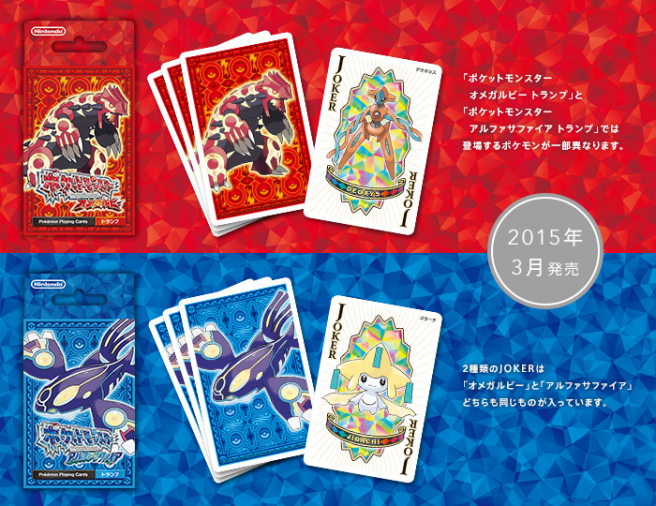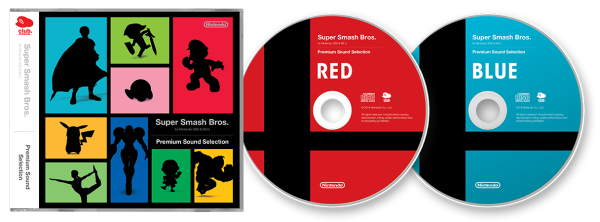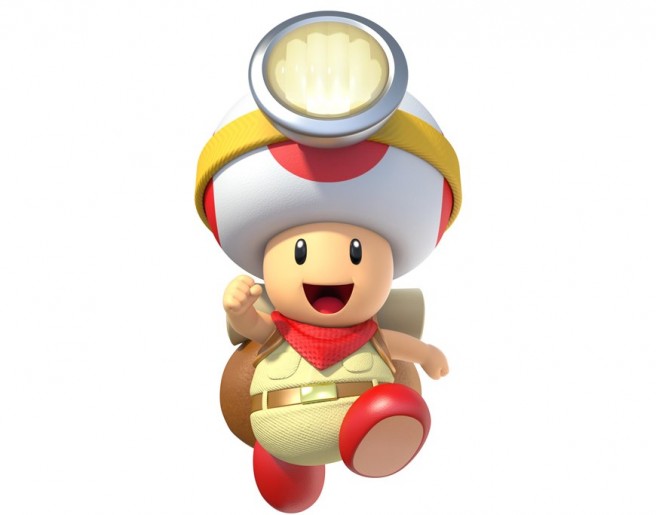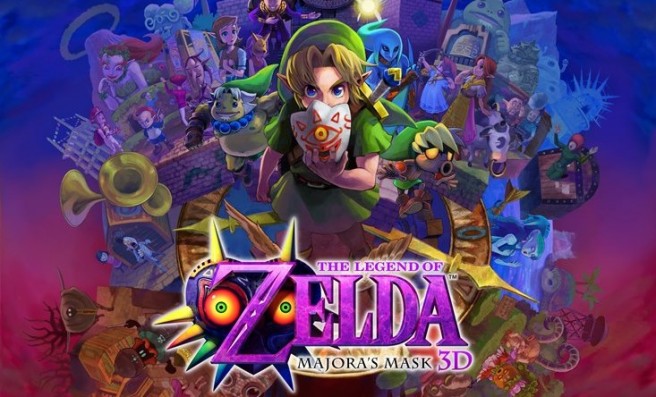Iwata on the need to take advantage of smartphones/character IP, west coast labor dispute impacting stock, more
Posted on 9 years ago by Brian(@NE_Brian) in General Nintendo, News | 2 Comments
Please tell me your thoughts on the potential of the existing businesses. You have explained that you would regain Nintendo-like profits in the fiscal year ending March 2017. I would like to know the expected balance between the existing businesses, Nintendo 3DS and Wii U, and new endeavors, such as more active utilization of character IP and QOL. Based on the latest financial results, I presume that it would be difficult to turn a stable and significant profit from the existing businesses because Nintendo 3DS has entered the latter half of its product lifecycle and Wii U is expensive to produce. Would you give me some clues about your outlook for the fiscal year ending March 2017?
First of all, we have never thought that the future of dedicated video game platforms would be bleak so we should migrate to a new business area. On the contrary, we continue to consider what more and better we can do to attract consumers to our dedicated video game platforms or to have them understand the value of our platforms.
Following the generally accepted theory on platform lifecycles, it is natural for you to presume that the sales of Nintendo 3DS will drop X percent each year or we cannot expect a huge increase in Wii U sales. On another front, we have witnessed one single software title completely change the entire picture of our business many times. I believe one of the most impressive stories was the time when people thought the Game Boy platform was virtually over. However, a software title called “Pokémon” turned things around for the platform and ended up creating the biggest annual sales for Game Boy in the latter half of the platform’s eventual lifecycle. Therefore, we do not believe that the situation so far means that there will not be a bright future. However, we should learn from our experiences of not being able to perfectly respond to certain social changes such as changes in the way consumers collect and receive information.
More: top
Iwata talks about Nintendo’s different divisions
Posted on 9 years ago by Brian(@NE_Brian) in General Nintendo, News | 0 comments
Please explain the current structure of the development divisions and the direction you, Mr. Iwata, are taking in order to establish an ideal one. You once told us that the two hardware development divisions had been consolidated. I have heard that other software development companies mainly adopt a studio, project or division-style development structure. Please explain Nintendo’s current structure, and how you, Mr. Iwata, are planning to change it.
Currently Nintendo has four development divisions and one of them is for hardware development. Years ago, there were two different hardware divisions – one for handheld devices and one for home consoles, with few personnel interactions. In fact, we had to use completely different technologies for handheld and home console development at that time. Technologies that were suitable for handheld devices or home consoles had nearly nothing in common, so it was reasonable to divide hardware development into two divisions. However, with recent technological advances, technologies for both systems are becoming more similar. Also, just because they are home consoles does not mean today that they can consume as much electricity as they possibly can. In fact, we have already been proactively working to reduce the consumption of electricity since the Wii era. Furthermore, the Wii U GamePad has a large screen, a battery pack, control inputs and wireless modules inside, so in technological terms, it required very similar know-how to that required for developing a handheld device. Based on such experiences, we had been working toward consolidating the two divisions for a while and started the process two years ago. Of course, it takes time for two divisions to completely assimilate, and we now are confident that it has progressed very well. Senior Managing Director, Mr. Takeda, is in charge of the hardware development division.
More: top
Iwata on amiibo – why Nintendo chose the size/consistent price, 3DS impact, more
Posted on 9 years ago by Brian(@NE_Brian) in 3DS, General Nintendo, New Nintendo 3DS, News | 2 Comments
I would like to know a little more about amiibo. Even by taking into consideration the difference in the Wii U hardware installed bases in Japan, Europe and the United States, when I calculate how many amiibo figures have been sold against the number of compatible software titles sold in the same region, I still cannot tell why the amiibo attach rate shows such regional disparity. Also, with Nintendo 3DS compatibility, how do you think the potential of amiibo will grow? I would appreciate it if you could touch on profitability too.
Firstly, you are correct in saying that the sales of amiibo and its attach rate to the compatible software, or how many amiibo figures each consumer has purchased, differ by region.
When it comes to the figure and video game entertainment category, there are two existing franchises: Activision released “Skylanders” four years ago, and Disney released “Disney Infinity” two years ago. In contrast to these two franchises, in which each figure is compatible with one software title, amiibo is compatible with multiple software titles. While under development, it was internally referred to as “NFP (Nintendo Figurine Platform).” In other words, we were spreading the message inside the company that amiibo would be a “platform.” What we are offering with one amiibo figure is the ability to experience a range of entertainment with a variety of software. However, before we actually launched amiibo, the number of consumers who were aware of the overall concept of this product category, namely, toy figures are lined up on a store shelf in the video game section and when you buy and use it with a game, something very fun would happen, differed greatly in Japan from the rest of the world. This product category is called “Toys to Life” in the overseas markets, and it has established a large market in the United States. Although the size of the market in Europe is smaller than the U.S., there is still a certain level of awareness. On the other hand, while “Toys to Life” products had been introduced also in the Japanese market, they were yet to show results in this country. In addition, when it comes to popular toy figures in Japan, they are generally a bit smaller in size and cost a bit less than amiibo. In fact, when we first explained amiibo to Japanese distributors, they advised us that amiibo would be a little too big in size and cost slightly too much for a toy figure in Japan. However, because we were aware of size of the global market for this product category, we decided that this size and price point was most appropriate for the global market. Now that we have witnessed solid results for amiibo in the U.S., Australia and Europe, we believe we made the right decision. So, to answer to your question, we acknowledge the large awareness gap for “Toys to Life” products and their uses in Japan and the overseas markets, and we feel that some time is needed to close this gap.
Pokemon Omega Ruby/Alpha Sapphire playing cards coming to Japan next month
Posted on 9 years ago by Brian(@NE_Brian) in 3DS, General Nintendo, News | 1 Comment
Nintendo is bringing out a new set of Pokemon cards in Japan next month. For 500 yen a pack, consumers can pick up a card set based on Pokemon Omega Ruby and Alpha Sapphire. While Both get the same Joker cards, they have their own unique Pokemon based on which version you pick up.
Former SEGA of America CEO says Nintendo should continue what it’s doing, but extend to mobile
Posted on 9 years ago by Brian(@NE_Brian) in General Nintendo, News | 44 Comments
Former SEGA of America CEO Tom Kalinske shared high praise of Nintendo while speaking with GamesIndustry.
Kalinske said that Nintendo should continue making hardware and consoles. At the same time, he feels that it would be wise for the company to try expanding its games to mobile devices like the iPhone or iPad, since it would be “a form of marketing”.
That might just be a small suggestion. Ultimately, Kalinske proclaimed: “I don’t think they should give up what they’re doing because they’re damn good at it.”
I don’t think [Nintendo] should give up hardware or consoles. I am surprised that they haven’t formed a division to extend the IP. I’d love to play some of their games on my iPhone or iPad. It’s really a form of marketing for them in a sense. They wouldn’t even need to make that much money off it, but it would keep their brands relevant with the users, including people that are older, like me. So it seems to me it’s a marketing mistake, but I don’t think they should give up what they’re doing because they’re damn good at it.”
More: interview, SEGA, Tom Kalinske
Smash Bros. Wii U/3DS Club Nintendo soundtrack seemingly being sent out
Posted on 9 years ago by Brian(@NE_Brian) in 3DS, General Nintendo, News, Wii U | 8 Comments
The Super Smash Bros. soundtrack appears to be making its way out to Club Nintendo members.
As of today, Nintendo has started sending emails about an unnamed physical reward being shipped. Since the order number is in line with what’s listed on users’ Club Nintendo page, it appears that this is in fact the Smash Bros. soundtrack.
Fans were able to reserve the soundtrack by registering Super Smash Bros. Wii U/3DS on Nintendo’s rewards site. Another bonus – Mewtwo DLC – will be available this spring.
Thanks to Anthony for the tip.
Photos showing the back of the Super Mario amiibo boxes
Posted on 9 years ago by Brian(@NE_Brian) in General Nintendo, Images | 0 comments
More: Amiibo
Captain Toad producer wants to see the character in a variety of games… and maybe Mario Kart
Posted on 9 years ago by Brian(@NE_Brian) in General Nintendo, News | 26 Comments
Nintendo’s Koichi Hayashida wants to see Captain Toad “featured in a variety of games”. It also seems as though Hayashida would be interested in having the character end up in Mario Kart. That information comes from the latest issue of GamesMaster, which contains a short interview with the Captain Toad: Treasure Tracker producer.
When asked what he foresees in the future for Captain Toad, Hayashida said:
At this stage we don’t know. I personally want to see him featured in a variety of games. I’ve even ‘secretly’ emailed the director of Mario Kart to see if he’d consider including Captain Toad, but I haven’t heard back from him yet!
Director Shinya Hiratake also answered the same question. His thoughts are as follows:
Through the development of this game I’ve grown even fonder of Captain Toad. he can’t jump, and struggles to defeat his opponents, but it’s precisely that he is not a powerful character that he can show us his unique take on all these situations. as a developer of his game, and one of his fans, I look forward to seeing where he goes next.
More: interview, Koichi Hayashida, Shinya Hiratake, top
Aonuma on Zelda: Majora’s Mask – reusing character models, bottles tease, why Clocktown’s bank vault isn’t affected by time, and more
Posted on 9 years ago by Brian(@NE_Brian) in 3DS, General Nintendo, News, Wii | 7 Comments
Surprise, surprise! Another interview with Eiji Aonuma has appeared. The latest one comes from Game Informer, who spoke with the Zelda producer.
There are actually quite a few interesting questions and answers. Aonuma was asked if Majora’s Mask is all a dream, teased a special event in the 3DS version for finding all of the bottles (plus there’s an extra one in this version), and shared a development nugget about Twilight Princess’ development.
Head past the break for some interview excerpts. The full talk can be found here.








